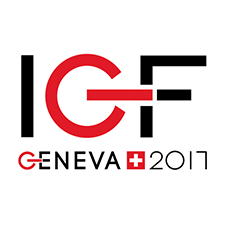IGF 2017 – Best practice forum on gender and access
7 Dec 2016 11:15h - 12:45h
Event report
[Read more session reports and live updates from the 12th Internet Governance Forum]
Discussion during the Best Practice Forum (BPF) on Gender and Access was structured in two parts: a working session and a panel discussion where best practices were shared among practitioners, focal points, and civil society workers.
The moderator, Ms Jac SM Kee, Association for Progressive Communications (APC) Women’s Rights Programme Manager, opened the session by illustrating the work of the BPF on gender. In 2015, its annual report focused mainly on online abuse and gender-based violence online whereas in the 2016 report the focus was on the challenges that women face both while accessing and using the Internet. This year’s report takes into account the fact that different contexts and circumstances might impact women’s ability to access and use the Internet. Thus, the challenges and needs of several main categories of women were included in the analysis:
- For refugee women, it emerged that maintaining contact with relatives and families is the most important need in the use of digital technology.
- Indigenous women face difficulties in access to relevant information as well as government services and justice.
- Young women have to balance access to the Internet with security concerns.
- The challenges for people with disabilities often arise from the policy side and are affected by cost.
- For LGBTI women, the use of the Internet is a valuable opportunity communication-wise as it helps in building a sense of community and thus establishing relationships.
- Finally, for women in rural areas, access to the Internet is mostly hindered by lack of infrastructure and cost considerations.
After the initial presentation, the discussion was further developed by the panellists: Ms Katie Drew, Emergency Lab Manager at United Nations High Commissioner for Refugees (UNHCR) Innovation, presented the findings of UNHCR Age, Gender and Diversity: Accountability Report 2016. She drew attention to three challenges faced by refugee women. First, most refugee women do not live in camp areas and among them only 1% have access to 3G connectivity. Second, she considered that when refugee women arrive in a new location, often they cannot legally acquire SIM cards – either because of language barriers and illiteracy or because of lack of official documents. Third, sustainability of projects by humanitarian organisations is always difficult to achieve. ‘The problem for a humanitarian organisation is not how to bring the technology to a location, but rather how to ensure that such technology will be available and accessible over time’, she concluded.
Ms Serene Lim, Research and Resource Development Officer for EMPOWER Malaysia, described the challenges faced by communities of indigenous women. Availability and affordability of the Internet and electronic devices are serious concerns because, for example, even where women have access to phones, charging the battery is difficult and access to Internet connection is costly and often poor. She further explained that availability of technology does not necessarily imply access to it. Moreover, when indigenous women access the Internet they may become victims of online gender-based violence.
Ms Bruna Santos, Coordinator at the Research Lab on Public Policies and Internet (LAPIN) and member of the ISOC Youth Observatory, suggested that although young women are part of the ‘digitally-born generation’, they still face challenges such as online gender-based violence and inequality when using the Internet.
Ms Chenai Chair, Research Manager at ICT Africa Mobile Pricing (RAMP), also addressed young women’s challenges, referring to a study conducted in Tanzania, Rwanda, and Nigeria. She explained that adolescent women (from 15- to 19-years-old) have very different use of the Internet compared to young adults (from 20- to 24-years-old). She explained that for these women, access to the Internet is problematic not only in infrastructural terms but also in terms of content language. Moreover, access may also be hindered by cultural norms, which may have a negative impact on access to education for young women.
The session concluded with two considerations regarding gender and community access network interventions. Dr Carlos Rey Moreno, Community Access Networks Project Coordinator at the Association for Progressive Communications (APC), pointed out that often challenges regarding access to the Internet are addressed by actors that are external to a specific context and thus lack awareness of a country’s specificities. Dr Sarbani Banerjee Belur, Senior Project Research Scientist at Gram Marg, Rural Broadband Project, applied these considerations to rural India. She presented an ongoing project aiming at empowering rural women digitally. She explained that rural areas often lack basic infrastructure, i.e. access to TV white space technology and the deployment of Internet fibre. Moreover, she added that education and digital awareness are key because often women in rural areas are not aware of the potential benefits of Internet connection.
Ms Carla Licciardello, Policy Analyst at the ITU, illustrated the ITU’s work to bridge the gender gap and to promote digital inclusion. She reminded the audience that in 2016, the multistakeholder platform EQUALS.org was created in order to focus specifically on access, skills, and leadership.
By Marco Lotti
Related event

